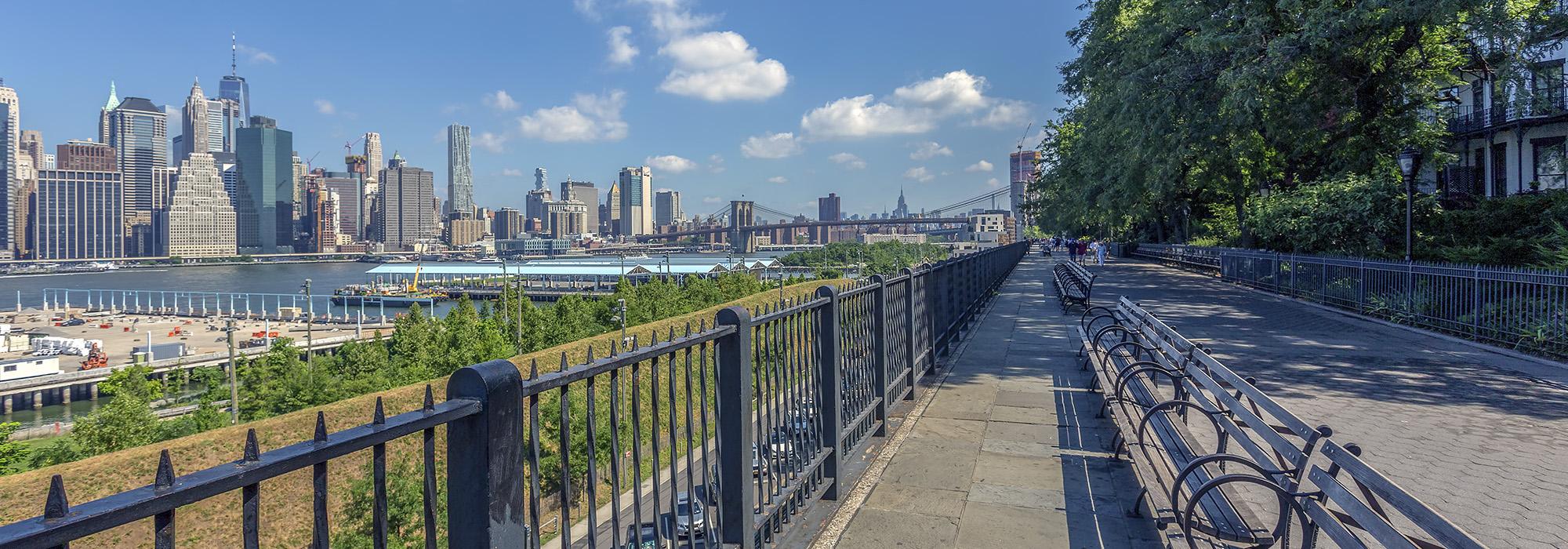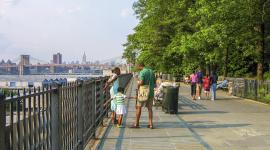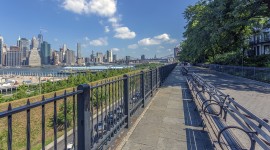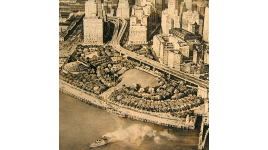Alternative Plan Floated for Brooklyn Heights Promenade
On March 7, 2019, New York City Comptroller Scott Stringer released a new plan for the revitalization of a 1.5-mile-long stretch of the Brooklyn-Queens Expressway (BQE), a triple-cantilever structure that runs parallel to the Brooklyn Heights neighbourhood. At 75 years of age, the expressway is nearing the end of its design life and requires reconstruction. Designed in 1946 by the notable firm Clarke & Rapuano, the structure supports the iconic 1,826-foot-long Brooklyn Heights Promenade on its upper deck. Floated as an alternative to the New York City Department of Transportation’s (NYCDOT) contentious proposal to destroy the promenade, the ambitious plan calls for the elimination of cars and converts the lower level of the BQE into a truck-only, two-lane highway while transforming the upper-level cantilever (just beneath the promenade) into a two-mile-long linear park.
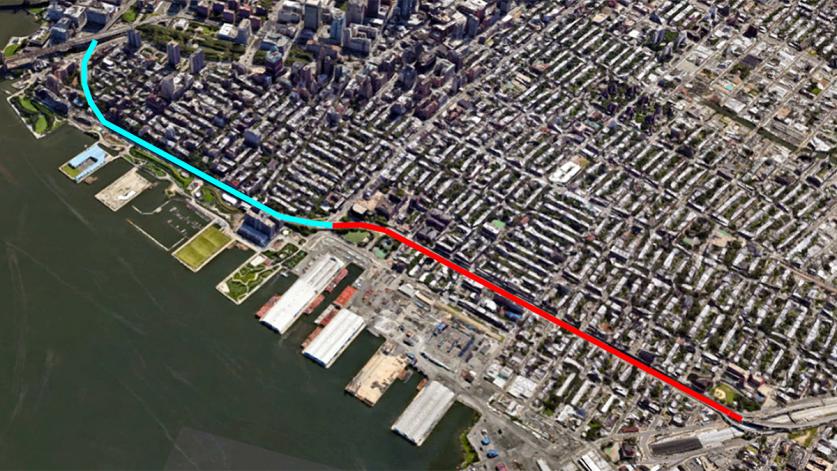
According to the Brooklyn Daily Eagle, the proposed ‘Cobble Hill Linear Park’ would include ball fields, dog runs, bike paths, and playgrounds and would stretch along the middle level of the expressway in Brooklyn Heights. The parkland would then continue, forming a deck over the entrenched section of the BQE at Cobble Hill and Carroll Gardens before integrating with a new park and pedestrian bridge at Red Hook. According to Stringer, the proposed parkland would reconnect several waterfront neighborhoods in Brooklyn that were disconnected when Robert Moses first introduced the expressway in 1954. If the proposal is implemented, the roughly 144,000 cars that use the BQE daily will be diverted through other routes, either local streets, the Hugh Carey Tunnel, the Belt Parkway, or public transit. Because daily freight traffic cannot be redirected onto local streets, the BQE would be transformed into a freight corridor from Sunset Park to North Brooklyn. The proposal has been praised by both the Brooklyn Heights Association and the Cobble Hill Association.
“We need to reconsider the policies that we have implicitly been following, both as a city and as a nation, that prioritizes moving cars — typically single occupancy vehicles — above all other considerations, particularly when our mass transit system is failing, and global warming poses a threat to human existence.”
— Peter Bray, executive director of the Brooklyn Heights Association
Stringer’s alternative joins several other proposals that aim to save the promenade; the latest was proposed by Mark Baker, a longtime neighborhood resident who wants to convert the BQE into a three-level, Tri-Line Park overlooking Brooklyn Bridge Park, the harbor, and the Manhattan skyline. The expressway’s traffic would be routed through a new enclosed highway under Furman Street. The Brooklyn Heights Association (BHA) has submitted its own BQE proposal to NYCDOT pushing to build a highway parallel to the promenade, an alternative designed by Marc Wouters Studio. Another proposal calling for a tunnel to bypass the expressway and be diverted through Downtown Brooklyn was submitted by a Cobble Hill resident Roy Sloane. All the proposals are currently being reviewed by NYCDOT, and the approved BQE rehabilitation plan will be submitted for environmental review, which is scheduled to begin later in the year and will take two years to complete.
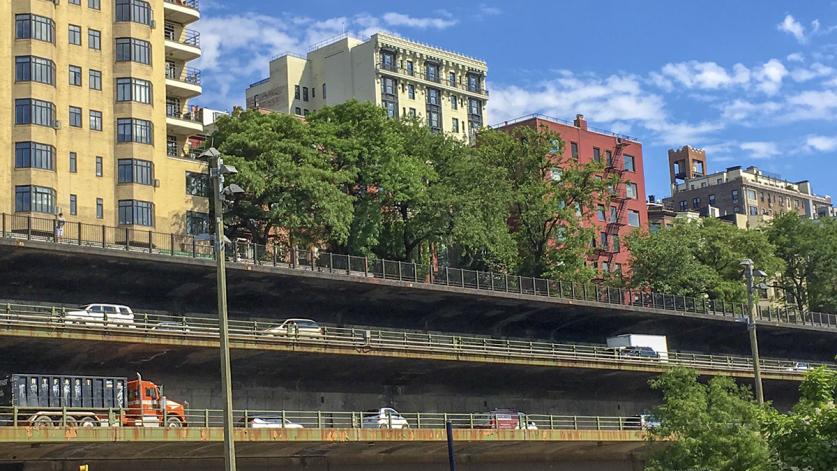
TCLF enrolled the Brooklyn Heights Promenade in its Landslide program in December 2018 after it was alerted to the imminent threat posed to the promenade by the construction alternatives presented by NYCDOT in September 2018. The first, more traditional scenario would involve a lane-by-lane reconstruction that would require neither a temporary roadway nor an extensive closure of the promenade, which could take more than eight years to complete, costing from $3.4 to $4 billion. The second option necessitates the complete closure of the affected portion of the expressway and construction of a temporary six-lane roadway on the level of the Brooklyn Heights Promenade, as well as the rerouting of 153,000 cars and trucks to the promenade daily, threatening the nearby neighborhood with adverse environmental effects. Both NYCDOT plans have generated intense opposition, prompting Mayor Bill de Blasio to state that his administration is open to considering other ideas.



